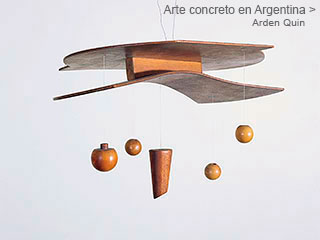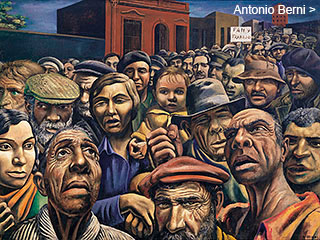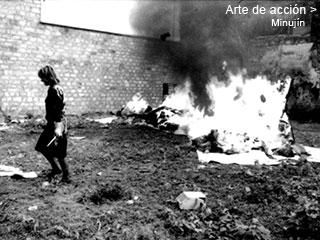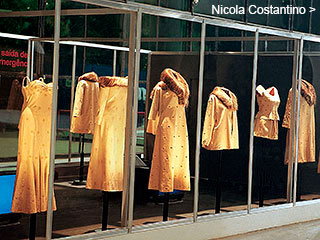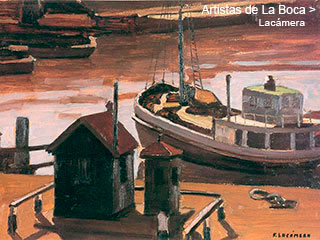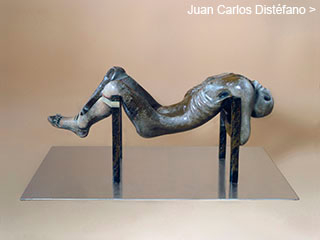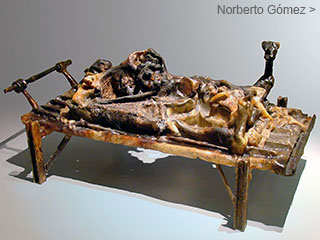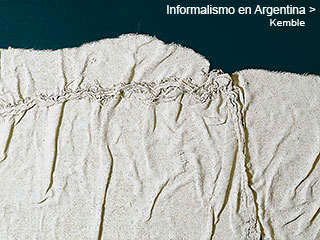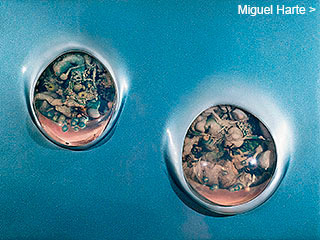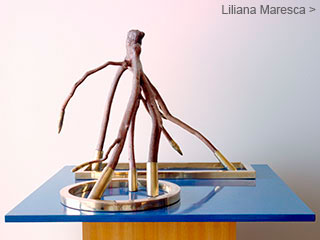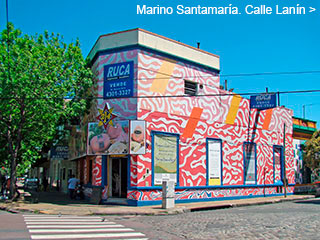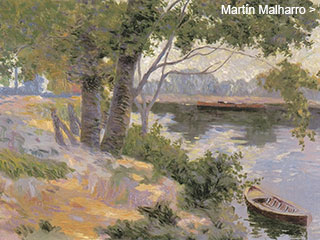Menú
Algunos dossiers
Informalism
in Argentina
in Argentina
by
Jorge López Anaya
August 2003
August 2003
Argentine Informalism incorporated processes which went against the “good taste” of the local practices. Based on the existential poetry of the time, through spontaneous gestures and the use of discarded material, it violated the limits of the traditional artistic genre and opened the road to the concept of the object, the installations and the art of action.
Greco
marking its surrounding with a circle made of chalk or a similar element. It is possible to find a parallelism with the Dadaism core of the “appropriation” of pre-existing objects. Nevertheless, more exactly so, it is an esthetic practice that can be called an “interventionalist model”, a kind of change of the reality that has a genealogical line that goes from Dadá up to the International Situationist, Yves Klein, Piero Manzoni and Fluxus.
The Vivo Dito created situations where the possible existence of the art piece that still survived as a material object was negated. As a matter of fact, from then on, the action of the artist would produce an expansion of the consciousness of the spectator. The process would stop being an artistic one, it did not possess artistic content; it was esthetic due to the expansion of its sensitivity.
During this time he wrote with desperation:
“I work incessantly, hitting onto something as I am being hit”.
But he also affirmed that:
“Painting will disappear the day that in our existence there’ll be no need to admire or to be admired. I know that the problem is a more complicated one, impossible not to notice as I suffer each and every moment. But, for this same reason, I say fully convinced that painting finished its cycle with Ives Klein’s blue painting, and together with it went
more


